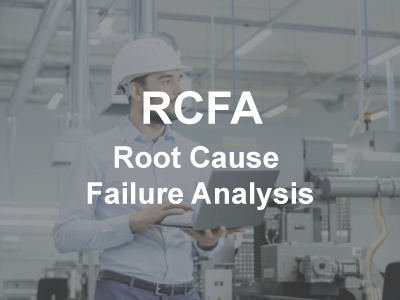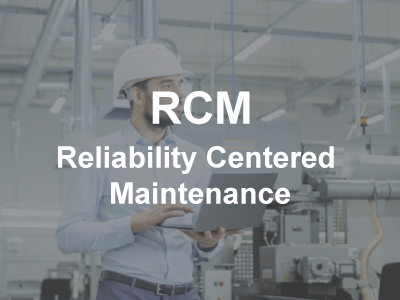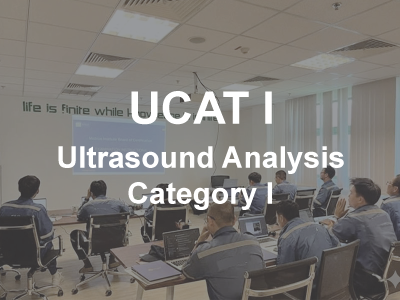Introduction- The reliability engineer and the reliability program leader
- Overview of the Asset Reliability Transformation® process
- The benefits of reliability
- How does reliability improvement compare to other programs?
Culture Change - Culture change and you
- Getting suggestions
- The brown-paper process
- Motivation
Training and Skills Assessment - Why do people need to be trained?
- Skills assessment
- Training and certification
Risks and Consequences - Assessing the risks
- Developing the consequence ranking system
Likelihood and Detectability - How likely is failure?
- Will we see the failure coming?
Reliability Data Analysis - The importance and value of data
- The foundation of reliability engineering
- Statistical techniques
- Data and Weibull distribution
- Duane model and Crow-AMSSA
- Reliability block diagrams (RBDs)
- Using reliability data for decision making
- Data quality
Asset Criticality Ranking - How should the asset criticality ranking be defined?
- Asset criticality ranking step by step
Pareto Analysis - What is Pareto analysis?
- Pareto analysis example
Defect Elimination - What is defect elimination?
- Defect elimination strategy
Minimize Life Cycle Cost - Life cycle cost minimization
- Design for reliability
- Value-driven procurement
- Acceptance testing
Operations and Reliability - Operator-driven reliability (ODR)
- Standard operating procedures (SOP)
- Overall equipment effectiveness (OEE)
Asset Strategy Development - What is an asset strategy?
- How to develop an asset strategy
- Typical outcomes of an asset strategy
Master Asset List and Bill of Materials - How to develop an accurate Master Asset List (MAL)
- How to create a Bill Of Materials (BOM)
- Change management
Fault Tree Analysis (FTA) - What is FTA?
- The steps of FTA
- Example of FTA
Failure Modes, Effects, and Criticality Analysis (FMECA) - What is FMECA?
- The steps of FMECA
- Example of FMECA
Reliability Centered Maintenance (RCM) - What is RCM?
- The steps of RCM
- Example of RCM
Preventive Maintenance Optimization (PMO) - What is PMO?
- Prerequisites for performing PMO
- Getting started
Root Cause (Failure) Analysis (RCA) - Why and when to perform RCA?
- People and RCA
- RCA techniques
- Condition Monitoring data and RCA
| Work Management- Goals of work management
- Roles and responsibilities
- Work management flow
- Job scheduling and execution
- Closeout and feedback
Spares and Material Management - The importance of spares management
- Spares database
- The selection process and purchasing requirements
- Caring for spares
- The storeroom
Precision Lubrication and Contamination Control - The importance of lubrication
- How lubrication works
- Contamination
- Filtration
- Storage and dispensing
Precision Shaft Alignment - Introduction to shaft alignment
- What is misalignment?
- Types of misalignment
- Determine the alignment state
Rotor Balancing - What is unbalance?
- Causes of unbalance
- Diagnosing unbalance
- Why balance?
- Balancing the rotor
Mechanical and Electrical Fastening - Precision fastening
- Bolt torquing (tensioning)
- Electrical connections
- 5S and the visual workplace
- 5S: Lean: Six Sigma Reliability improvement
Vibration Analysis - Introduction to vibration analysis
- Vibration sensors
- Overall level readings
- Vibration spectra, time waveform, and phase analysis
- Rolling element bearing fault detection
- Fluid-film bearing and rotor fault detection
- The future of vibration analysis
- Case studies
Ultrasound - Introduction to ultrasound
- Mechanical and electrical applications
Oil Analysis - New and used oil analysis
- Analysis technologies
- Measuring and reporting oil cleanliness
- Wear particle analysis
Infrared Thermography - Introduction to infrared analysis
- Mechanical and electrical applications
Inspections Performance and NDT - Visual inspections
- Non-destructive testing (NDT) methods
Electrical Equipment - Power quality
- Electrical testing
- Partial discharge
- Induction motor testing
- Motor current signature analysis (MCSA)
- Electrical signature analysis (ESA)
- Motor circuit analysis (MCA)
The Future of Condition Monitoring - Technologies and analytics in the future
Breaking Out of Reactive Maintenance - How to break out of the reactive maintenance cycle of doom
Continuous Improvement (Kaizen) - Key performance indicators (KPIs)
- Maintenance metrics
- CM and reliability performance
- Review program strategy
|







